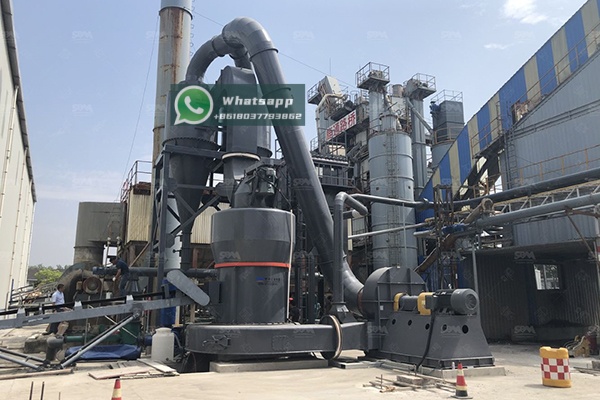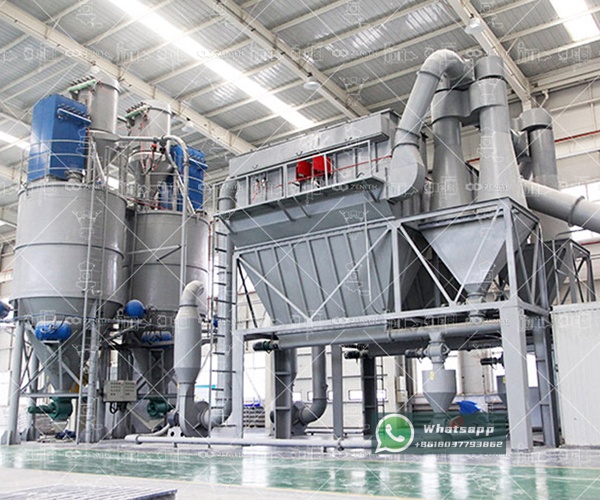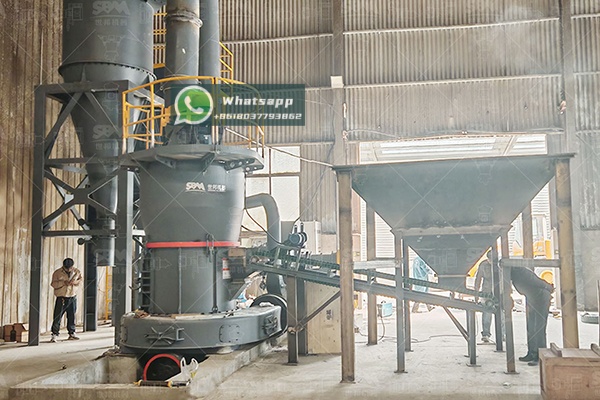The pursuit of exceptional print quality and visual appeal has positioned high gloss paper as a premium product in the publishing, packaging, and advertising sectors. At the heart of achieving this superior finish lies the coating formulation, where ultrafine calcium carbonate (GCC) plays a pivotal role. This article delves into the critical properties of ultrafine GCC, its function within high gloss paper coatings, and the advanced grinding technology required for its production.
Paper coating is a complex process designed to alter the surface characteristics of base paper. By applying a mixture of pigments, binders, and additives, manufacturers can significantly improve smoothness, brightness, opacity, and, most importantly, gloss. Among the various pigments used, calcium carbonate has gained immense popularity due to its brightness, low cost, and compatibility with modern alkaline papermaking processes. However, not all calcium carbonate is created equal. For high gloss applications, the particle size distribution, morphology, and purity of the GCC are paramount.

The transition from standard GCC to ultrafine GCC (particle sizes typically below 2 microns, with a significant fraction in the sub-micron range) marks a significant leap in coating performance. The benefits are directly linked to the physics of light reflection.
The production of ultrafine calcium carbonate with a narrow particle size distribution is a technologically demanding process. It requires precision grinding and classification equipment capable of delivering consistent product quality. Traditional grinding mills may struggle to achieve the necessary fineness and energy efficiency. This is where specialized grinding technology from industry leaders becomes critical.
Shanghai Zenith Machinery Co., Ltd., an excellent manufacturer of ore grinding equipment in China, has made great achievements in the field of ultra-fine powder grinding. Specializing in the research, development, and production of industrial powder grinding equipment, Zenith offers solutions perfectly suited for producing high-quality coating-grade GCC. Among their extensive range of products, two mills stand out for this specific application: the XZM Ultrafine Grinding Mill and the LUM Ultrafine Vertical Mill.
The XZM Ultrafine Grinding Mill is widely recognized for its efficiency in producing superfine powders. It is particularly suitable for grinding soft or medium-hard materials like calcium carbonate with moisture content below 6%. Its design ensures a stable grinding condition and a narrow particle size distribution, which is crucial for high gloss paper coatings. The mill can achieve an impressive output fineness ranging from 325 to 2500 mesh (D97=5-74 microns), making it ideal for producing the finest GCC grades.
| Model | Working diameter (mm) | Max feed size (mm) | Final size (mesh) | Output (kg/h) | Main motor power (kW) |
|---|---|---|---|---|---|
| XZM221 | Φ800 | ≤20 | 325-2500 | 500-4500 | 75 |
| XZM268 | Φ1680 | ≤20 | 325-2500 | 5000-25000 | 315 |
The XZM series is an excellent choice for paper coating pigment producers looking for a reliable and efficient mill to enter the ultrafine powder market.

For larger-scale production requiring the highest levels of automation and energy efficiency, the LUM Ultrafine Vertical Mill represents the cutting edge. This mill integrates grinding, drying, classifying, and conveying into a single, compact unit. Its advanced classifier system allows for precise control over the particle size distribution, ensuring that the final GCC product meets the most stringent specifications for high gloss coatings.
| Model | Main machine power (kW) | Capacity (t/h) | Size distribution D97 (μm) |
|---|---|---|---|
| LUM1525 | 220-250 | 1.6-11.5 | 5-30 |
| LUM1632 | 280-315 | 2.0-13.5 | 5-30 |
| LUM1836 | 355-400 | 2.3-15 | 5-30 |
The LUM mill’s vertical structure reduces the footprint, and its intelligent control system makes operation and maintenance easier, contributing to lower overall operating costs.
Integrating ultrafine GCC into a coating formulation requires careful consideration. While it enhances gloss, its high surface area can increase the demand for binders (such as starch or latex) to maintain coating strength. Formulators must balance the ratio of ultrafine GCC with other pigments like kaolin clay and binders to optimize both optical properties and runnability on high-speed coating machines. The use of dispersants is also critical to ensure the ultrafine particles remain de-agglomerated and stable in the coating slurry.

Ultrafine calcium carbonate is no longer a luxury but a necessity for manufacturers aiming to produce top-tier high gloss paper. Its ability to create a smooth, highly reflective surface directly translates to the visual and functional quality demanded by the market. The consistent production of this specialized pigment, however, hinges on advanced grinding technology. Equipment like the XZM and LUM mills from Shanghai Zenith Machinery provide the precision, efficiency, and reliability needed to meet the exacting standards of the global paper coating industry. By investing in the right grinding technology, pigment producers can empower paper mills to achieve new heights in product quality and performance.